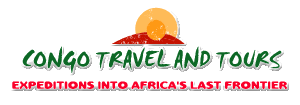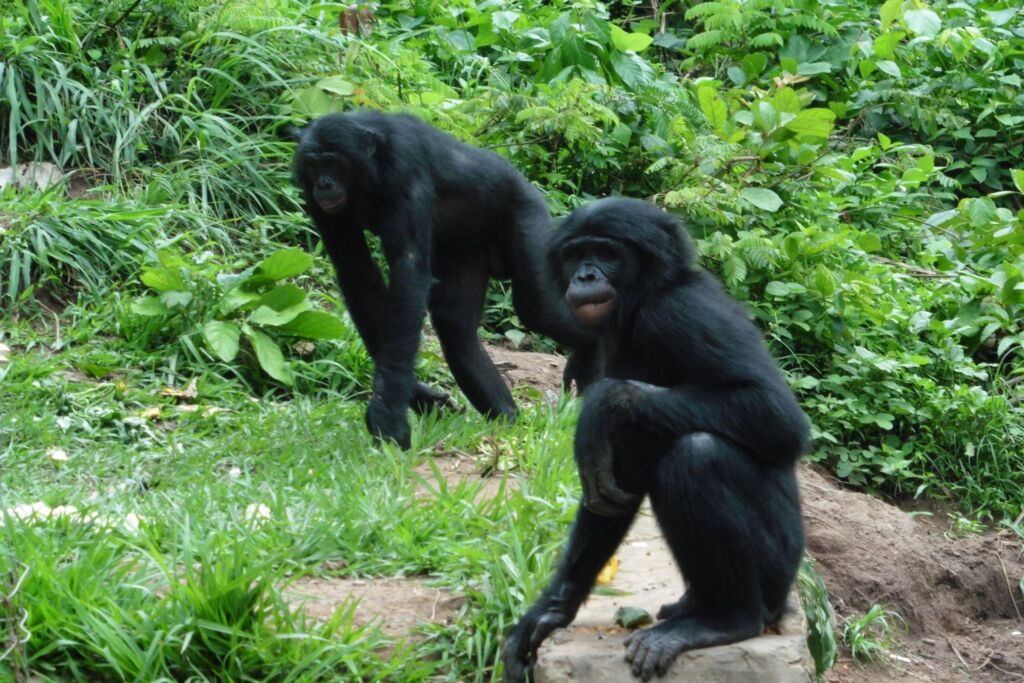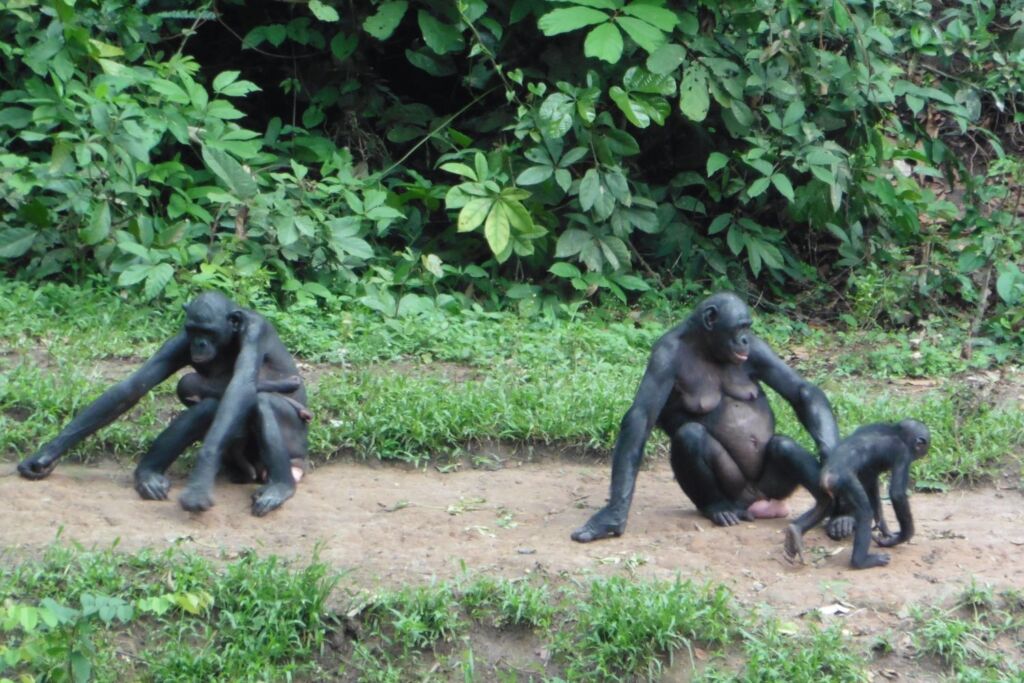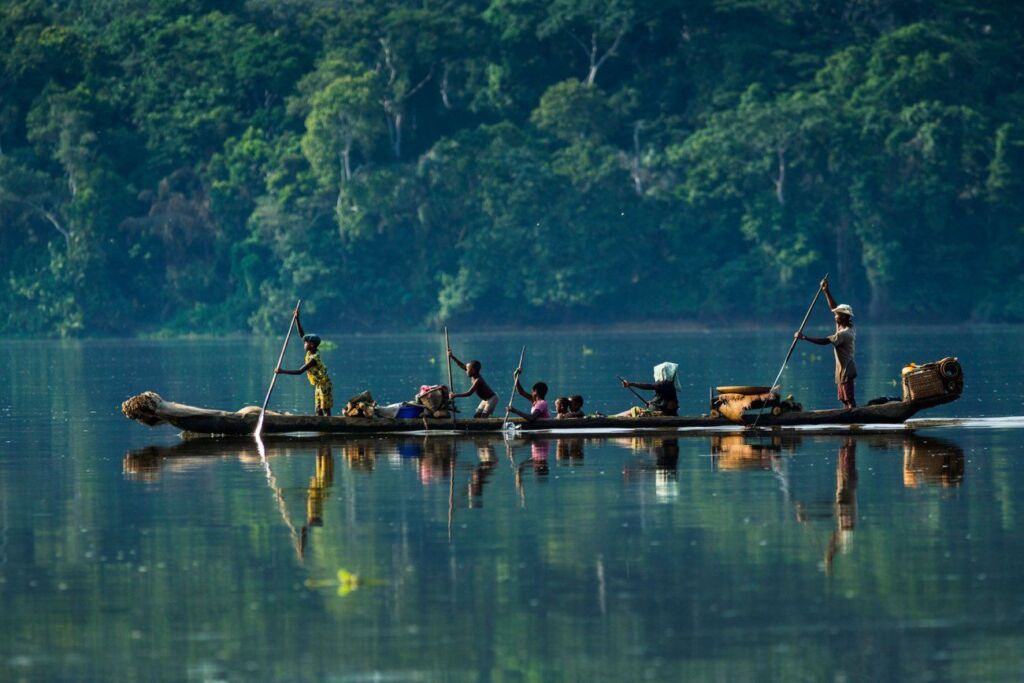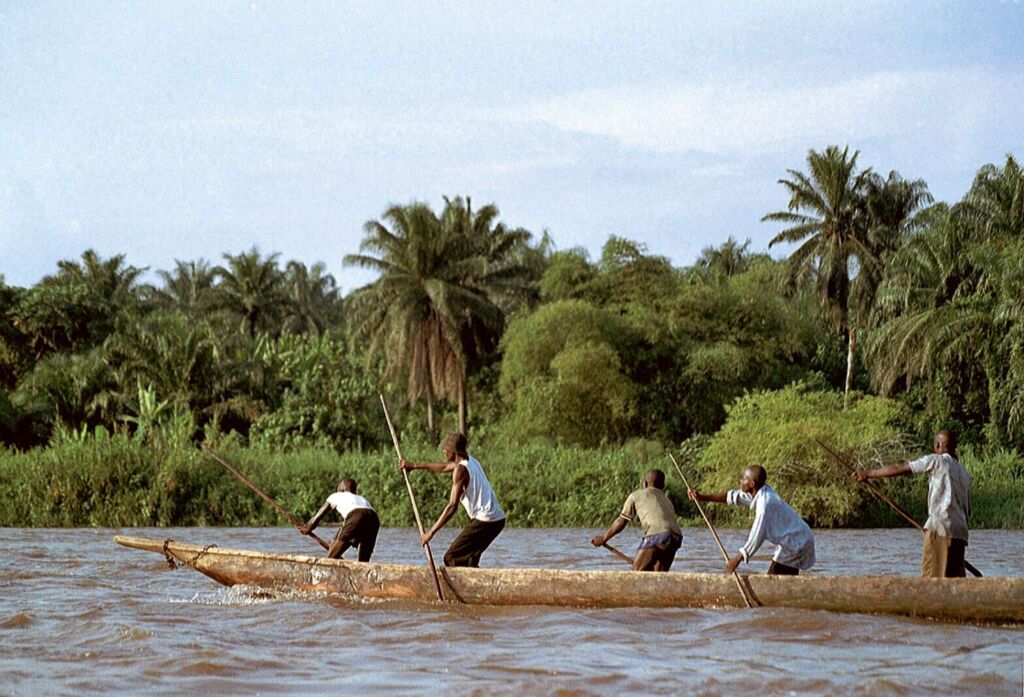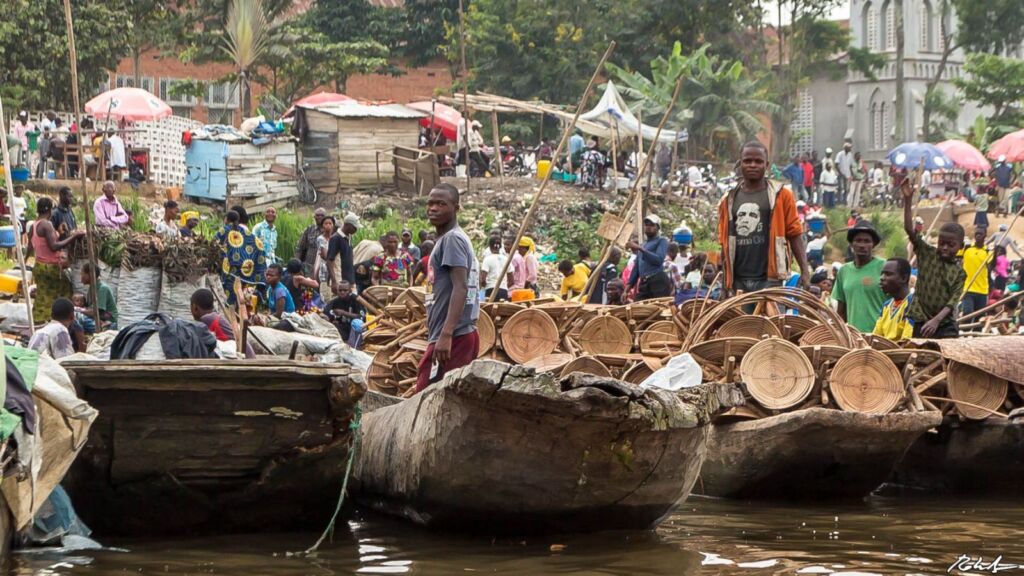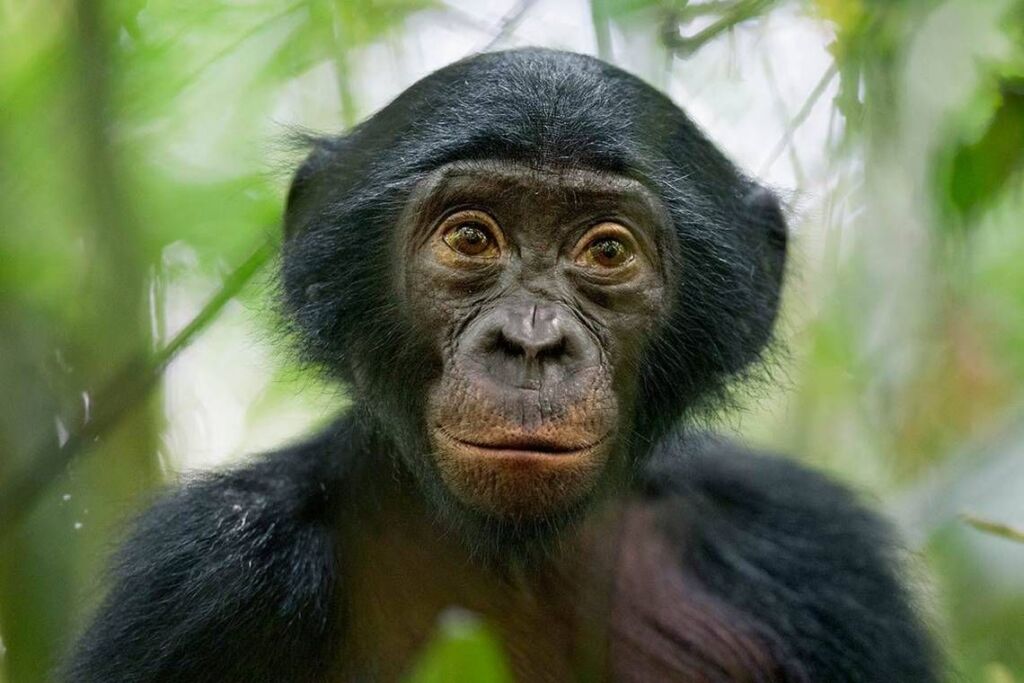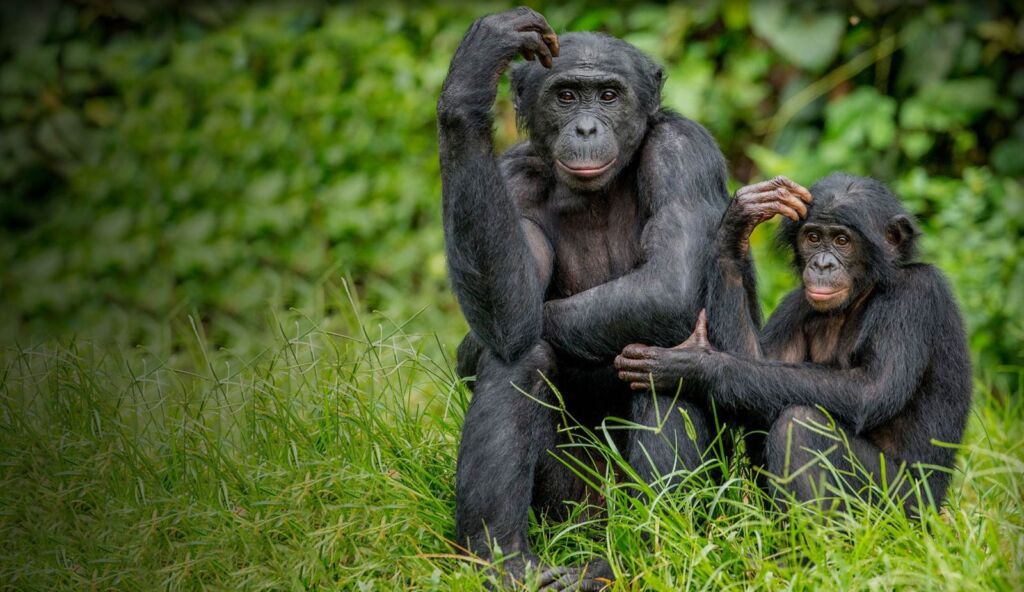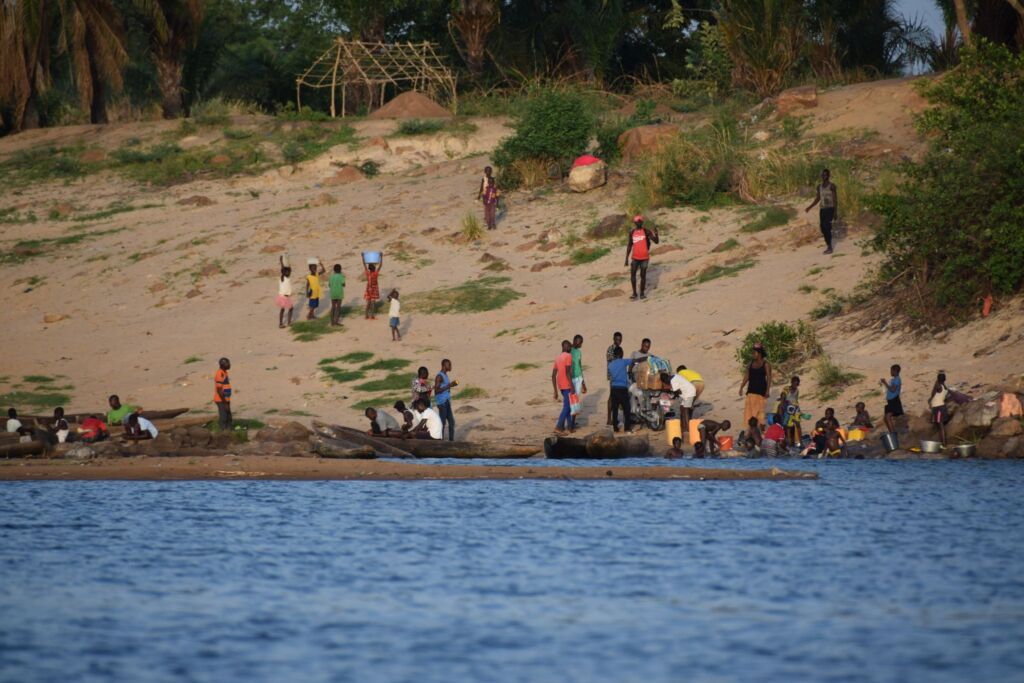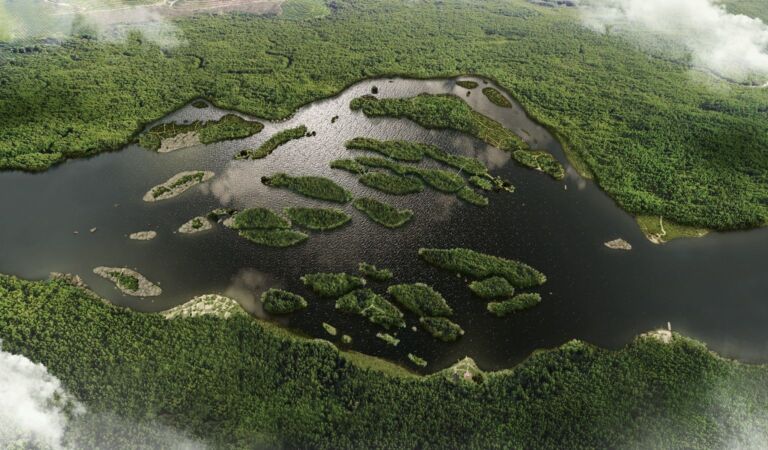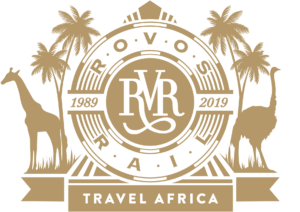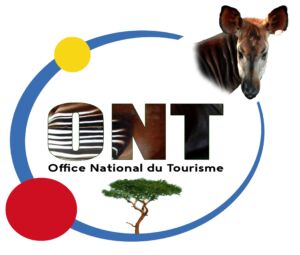Africa, the untamed continent, land of legends, mystery and adventure … and no region which embodies this more than Central Africa: home to mighty rivers, deep forest, mysterious creatures and isolated tribes. It is here where you’ll find endless rainforests packed with exclusive wildlife such as gorillas, chimpanzees, okapis, African gray parrots and many others. Even its smaller inhabitants are fascinating. Imagine seeing millions of butterflies traversing the river, while you’re slowly making your way down or spotting bioluminescent mushrooms when you’re walking through the dark. Your journey will be accompanied by the cry of the turaco, trumpeting elephants, distant drumming and flashes of gorillas.
Our journey starts in Bangui, the capital of the Central African Republic. Once plagued by violence, the city is back to being the sleepy capital it was once before. Depending on your group size we will either embark in a smaller boat for 2 people or one up to 8 people.
During our quest to tame Africa’s mightiest rivers, we will sleep along the banks of the Ubangi River and Congo River in comfortable sturdy tents and make a true glamping style camp every night. Our team will cook simple, local dishes and whenever we have the opportunity we’ll make fresh fish the traditional way, with charcoal and firewood.
Our first stop will be the village of Zinga, in the south of the Central African Republic.
The village of Zinga is located south of Bangui and is located at the confluence of the Lobaye and the Oubangui. It is a village about 1km long and 300m wide. The houses are traditional huts made from local materials (raffia palm roof and mud walls). Bordering the right bank of the Oubangui, Zinga is however distinguished by modern infrastructures inherited from its colonial past.
Indeed, the Compagnie Générale de Transport en Afrique Equatoriale (CGTAE), a river transport company, had built a six-kilometer railway, connecting the villages of Zinga and Mongo in the 1920s and whose operation ceased in 1960. This railway was a palliative to the problem of navigation on the Ubangi and the supply of the interior territory of the French colony, in particular the Ubangi-Chari and Chad. Also, it was a solution to the recurring problem of porting in Oubangui-Chari. A load break occurred during low water at the Zinga threshold, requiring a transshipment from Congo or Bangui. Goods and passengers alighted from the large steamers below the threshold and boarded smaller ones upstream in the village of Mongo.
The remains of Zinga consist of a hangar containing two locomotives, eighteen flatbed cars and two passenger cars. They also include two warehouses, two dwelling houses, the wreck of a steamboat named "Le Gouverneur Lamblin" and two boats forming the relics of the activities of this period between the wars which lasted until 1960. Docks constructed of concrete complete the installations. The Mongo terminus has two warehouses and two residential houses.
However, the degradation of the Zinga site has started. The railway does not exist any more but it is materialized by a line of dry stones which constituted its base. The wagons located on the rails in the starting position are completely oxidized just like the machines.
The hangar is also beginning to deteriorate. Its metal profile structure still supports and maintains the building.
During your stay we will camp near the river, eat local food, explore the villages, visit the pygmy tribes of Central African Republic and we can also go fishing for Goliath Tiger Fish and other fish.
After Zinga, we will cross the border with Congo-Brazzaville, the second country on your list. Congo-Brazzaville is a sleepy country rich in forests and wildlife. It boasts a few wonderful national parks with large numbers of gorillas, elephants, chimps, antelopes and even predators such as lions, hyenas, leopards and more.
We will pass by Bétou, the first town of importance entering Congo-Brazzaville and a perfect stop to have some cold drinks and stretch our legs. We will also pass by Île de Bétou, one of the biggest islands on the Oubangi river. The coming days we will pass the villages of Landza, Lidouma, Ibenga and others. After Congo-Brazzaville it’s now time for the DRC and we’ll dive into the Ngiri Forest in search of chimps, bonobos, elephants and other animals.
The Ngiri Reserve (officially the Ngiri Triangle Nature Reserve) is a protected area in the Democratic Republic of the Congo. It is located in western Equateur, in the territories of Bomongo, Bikoro and Makanza, with a total area of 1,000 km2. It extends from the confluence of the Congo River with the Ubangi River to the North.
According to WWF, this reserve helps conserve biodiversity and the ecosystem in the Ngiri triangle.
The proposal to make a nature reserve of the Ngiri triangle (the area between the Ubangi, the Congo and the Ngiri) dates from 1975 but this one could not succeed. The project is relaunched by the WWF in the context of the Lac Télé–Lac Tumba landscape project. This new reserve is proposed to be IUCN category VI.
In August 2010, the cooperation agreement between the governments of Congo-Brazzaville and Congo-Kinshasa relating to the establishment of the bi-national Lac Télé-Lac Tumba provides for the creation of the Ngiri reserve, the scientific reserve of Mabali alongside the Tumba-Lediima Reserve in Congo-Kinshasa and the Lac Télé community reserve in Congo-Brazzaville.
The Ngiri reserve was created by order of the Ministry of the Environment in March 2011 with the participation of WWF.
Tumba-Ngiri-Maindombe is home to over 10,000 plant species. It is an important refuge to many birds and home to many kinds of mammals such as hippos, three types of crocodiles, elephants, buffaloes, leopards, antelopes and bonobos, next to other primate species. We can also find over 150 species of fish in its waters.
After exploring the DRC-side of the river, we will gradually make our way to Impfondo in Congo-Brazzaville, a pleasant town and the gateway to pygmy tribe villages and The Lake Télé Community Reserve, a vast inaccessible region with almost no decent roads and home to over 125.000 lowland gorillas. It is home to the famous
Lake Télé, which has seen several expeditions in search of the Mokele-Mbembe, a mythical creature roaming the area.
The region consists mainly of swamp forests, flooded savanna and floating prairie. The rivers are rich in fish and we can also try our luck here to look for fish such as the Goliath Tiger fish, gigantic eels and catfish. Besides gorillas, we can also find chimpanzees, elephants, buffaloes, antelopes and hippos.
We will continue our way down and pass Bolemba, Djoumbélé and after Djoundou we’ll finally get to see the mighty Congo River who gave its name to two countries. The area where both the Ubangi and Congo River come together provides great fishing opportunities and we will be on the lookout for big game fish. We will then spend a few days around Mossaka where the Alima River floats into the Congo River.
After Mossaka we will have our last forest adventure. We’ll go track a group of bonobos on the DRC-side for three days. There are up to 250 members and we’ll have an almost guaranteed chance of spotting them. After our bonobo-quest we’ll now go to Kinshasa where we will board.
Our tour will take roughly 15 days on the river and it’s necessary to have at least 4 to 5 buffer days in Kinshasa in case of any hold ups. We will use these days to explore the city and its surroundings.
This includes:
- Camping or basic accommodation along the way
- Basic local food and drinks
- Park entrance fees and activities
- Bonobo tracking
- Invitation letters
- One night at the hotel in Bangui and one night at the final destination: you can choose between Brazzaville and Kinshasa.
"It was a really good tour!! With our local guide and driver I got what I expected."
- Torsten (Germany)
